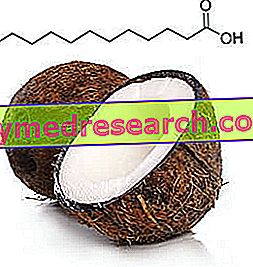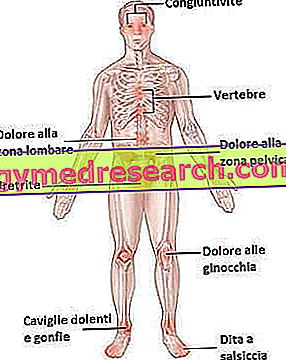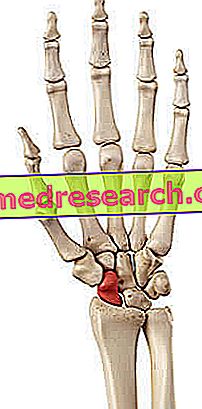Generality
Squids are fishery products widely distributed throughout the planet, quite similar to squid but classified by the modern system in a totally different way.

Obviously, European squid is NOT the only edible; in fact, there are many others, also belonging to the Family, Subfamily, Gender and different Species. An example is that of Dosidicus gigas (also called "red devil"), one of the most voracious sea creatures studied by scientists; these specimens reach exponentially higher dimensions than the European ones and their fishing is a considerable source of livelihood in Chile, Mexico and Peru. Another well-known species of squid is the Alloteuthis media (or small squid) widespread both in the Mediterranean and in the north-east Atlantic.
The giant squid is NOT part of the ordinary fishing squid.
Description
Squids have all the characteristics of cephalopod molluscs. They have a head with a brain, eyes, a "beak" mouth and tentacles; this is bound to a body with a sac that contains a shell and protects the organs responsible for digestion and reproduction.
The body of the squid is conical, provided with a pen or gladius of transparent, thin and long chitin; externally there are two lateral triangular fins. The upper skin pigment oscillates from pink to purplish reddish (which fades after death) with dark dots, while the lower one is clear. The head is provided with 10 tentacles (of which 2 are long indispensable for hunting) equipped with suction cups.
The European squid does not exceed half a meter in length for a weight of about half a kilo.
Habitat, reproduction and fishing of squid
The squid live on bottoms of different kinds, tendentially rocky, sandy or covered with Posidonia; the bathymetrics are variable but these animals need rather low temperatures. During reproduction (tendentially winter and / or spring, depending on the area) they go up again closer to the coast and are easier to capture. For the rest of the year, the squid are stationed at almost abyssal depths. The only areas in which the squid are always available, even near the coast (probably due to the nature of the currents, the availability of food, the temperature of the water and the conformation of the seabed) are some of the main islands. Squids have mainly nocturnal habits; in the hours of darkness they hunt and rise more to the surface.
Squids feed on fish, crustaceans and other molluscs. They are excellent predators and some also engage in cannibalism.
Squid fishing can be done in different ways; the amateur one is summed up mainly in the bottom fishing and in the slow trolling. As far as professional fishing is concerned, the most fruitful is certainly the technique with towed or trawl nets in the reproduction period.
European squid VS totani: differences
In addition to the enormous difference in size for adult specimens (the squid can reach and exceed 10kg in weight), between the squid and the squid there are some morphological differences which are rather difficult to grasp.
The small discrepancies are identifiable as: color, fins and pen or sword. While the squid is darker and is characterized by large triangular membranes that, from the middle of the body, reach the vertex of the trunk, the squid is lighter and possesses much shorter ones that cover only the extremity at the top. The pen or gladius of the squid is thinner than that of the squid, especially in the central portion.
Squid gastronomy
Squids are fishery products of great gastronomic value. The squid ( Alloteuthis media ) constitute the Species which, by definition, remains small and lends itself to frying; alternatively, even the young specimens of Loligo vulgaris lend themselves to the same purpose. Fried calamari, contrary to what many claim, should not be cooked whole. Certainly, accuracy in cleaning is not comparable to that of larger squid; however, removing the pen or gladius and the eyes is the best method to get a good culinary result. The pen or gladius has a tactile impact in chewing decidedly unpleasant, while the eyes and the viscera, during cooking, tend to break freeing the ink melanin; the result is a fried food with a black color and a crunchy consistency.
The larger squids, on the other hand, must be carefully deprived of the mouth, the eyes, often also of the skin that covers the body and of the viscera; the latter can be easily removed by separating the head from the trunk and emptying the cone. Once cleaned, the squid are destined: to the boiling for the cold salads of sea, to the incorporation in the accompanying sauces for the first dishes (pasta and polenta), to the formulation of the risottos, to the packaging of the soups etc. Squids are excellent in white, with tomato sauce or with other bases such as parsley pesto, rocket and basil.
Stuffed squid
X Problems with video playback? Reload from YouTube Go to Video Page Go to Video Recipes Section Watch the video on youtubeNutritional characteristics
Squids are low energy food of animal origin, which is why they are ideal in the context of a low calorie diet.
Calories are made mainly from high biological value proteins, fats are deficient and cholesterol is within average values. Glucose traces that do not significantly affect the total energy of the food are highlighted. The fiber is NOT present.
From the saline point of view, there is no lack: sodium, potassium, calcium and phosphorus; as regards vitamins, on the other hand, the content of Niacin (vit. PP) is appreciable and some retinol equivalents emerge (vit. A).
The squid therefore also lend themselves to the diet against metabolic diseases, whether they concern the lipid profile, whether they concern the glycemic balance or that of arterial pressure.
Nutritional values
Nutritional composition of Calamari - Reference values of the INRAN Food Composition Tables
 | |||||
| Squid, fresh | Squid, frozen | ||||
| Edible part | 65.0% | 59.0% | |||
| water | 80.0g | 84.2g | |||
| Protein | 12.6g | 13.1g | |||
| Prevailing amino acids | - | - | |||
| Limiting amino acid | - | - | |||
| Lipids TOT | 1.7g | 1.5g | |||
| Saturated fatty acids | 0.85mg | - mg | |||
| Monounsaturated fatty acids | 0.46mg | - mg | |||
| Polyunsaturated fatty acids | 0.40mg | - mg | |||
| Cholesterol | 64.0mg | 63.0mg | |||
| TOT Carbohydrates | 0.6g | 0.6g | |||
| Glycogen | 0.0g | 0.0g | |||
| Soluble sugars | 0.6g | 0.6g | |||
| Dietary fiber | 0.0g | 0.0g | |||
| Soluble fiber | 0.0g | 0.0g | |||
| Insoluble fiber | 0.0g | 0.0g | |||
| Power | 68.0kcal | 68.0kcal | |||
| Sodium | 185.0mg | 185.0mg | |||
| Potassium | 145.0mg | 145.0mg | |||
| Iron | 0.2mg | 0.2mg | |||
| Football | 144.0mg | 130.0mg | |||
| Phosphorus | 189.0mg | 170.0mg | |||
| Thiamine | 0.07mg | 0.05mg | |||
| Riboflavin | 0.16mg | 0.02mg | |||
| Niacin | 1.20mg | 2.10mg | |||
| Vitamin A | 75.0 µg | 75.0 µg | |||
| C vitamin | tr | tr | |||
| Vitamin E | - mg | - mg | |||



